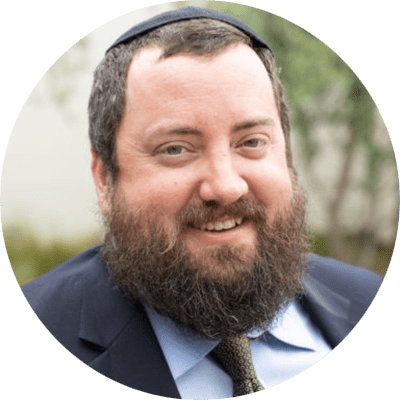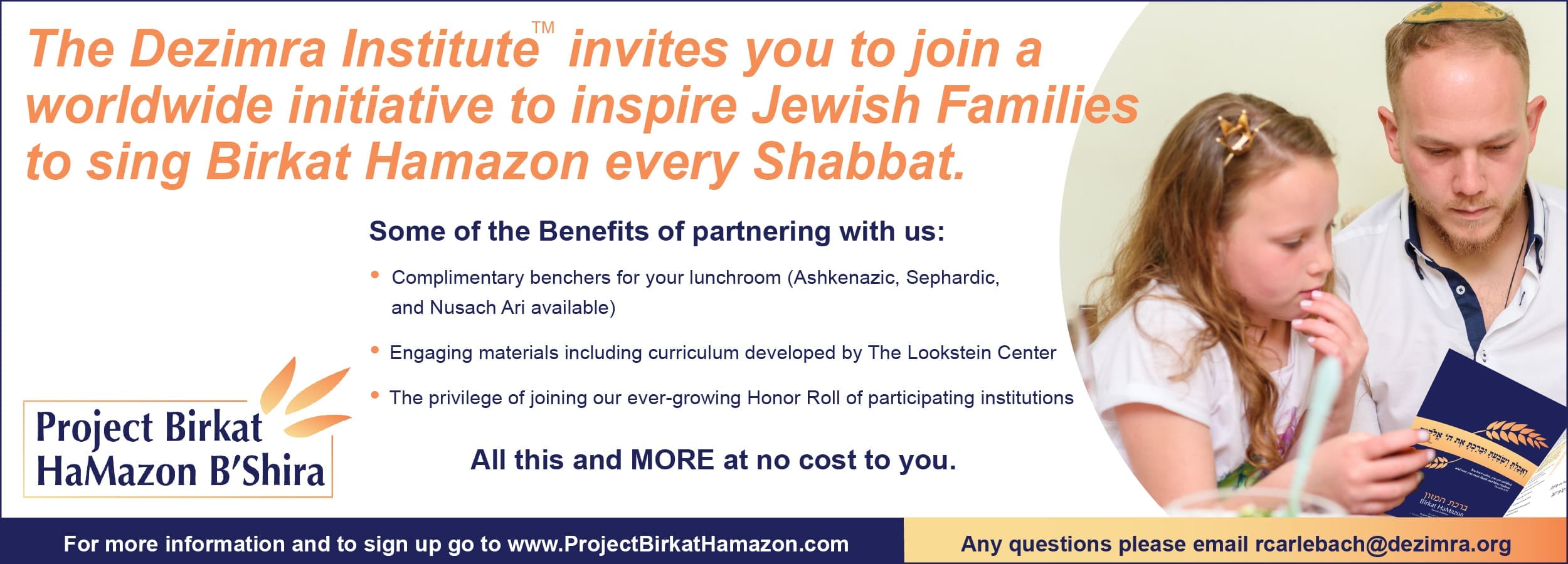To Build and To Be Built: Creating an Experiential Framework for Jewish Day School Students

Baruch Rock is the Rav Bet Sefer of Irvine Hebrew Day School. Rabbi Rock is dedicated to progressive Jewish learning, empowering children to find their own voices and connection with Judaism, and supporting teachers. He earned his ordination at the Joseph and Gwendolyn Straus Rabbinical Seminary, has a BA from NYU in History and Journalism, an MA in Desert Studies from Ben Gurion University of the Negev, and is a certified Permaculturalist.
During the 2021-2022 school year, Irvine Hebrew Day School (IHDS) launched its Yetzira program, a program of extended Jewish studies in our Middle School designed to be a creative and formative learning experience whose name is based on the kabbalistic concepts of creation and/or formation. Now in its second year, the program’s curriculum is designed to provide more time for textual skill development and critical thinking, exposure to an even wider range of topics/themes in rabbinic writings and Torah teachings, experiential learning, and group/leadership building activities.
The program emerged from a series of discussions about how to build additional Jewish studies into the weekly schedule. We landed on offering a voluntary program for Middle School students with the following objectives:
- Students will gain a deeper appreciation of, familiarity with, and connection to Jewish textual learning (Torah).
- Through community building and “togetherness” activities, learners will continue to grow their emotional intelligence and social connections.
- Using the natural world around us as our classroom, learners will build awareness of, appreciation for, and experience with our makom, our local “place,” which in turn will serve as the starting point for our learning about the centrality of Eretz Yisrael (the Land of Israel) in Jewish thought, historical experience, and the experience of our people throughout various lands during our long history.
The guiding principle in Yetzira is to make the two-dimensional texts of the Torah come to life for our students, who have not had years of living and learning the Torah’s teachings as a foundation for their Jewish lives. As such, we set about building for them an experiential framework that would see real world expressions and applications of choice texts which they could internalize using the resources of our campus. Below, I outline a selection of the experiential activities that formed the foundations of the learning.
We began with an exploration of the Shema. The objectives of this module are to have the students develop the ability to listen attentively and to understand how the selected midrashim guide us to learn the deeper significance of the Shema prayer—that listening can be done with both our ears and our hearts. The texts we explored were Deuteronomy 6:5, Genesis Rabbah 10:6, Exodus Rabbah 5:9, and the blessings for thunder and lightning. The students were introduced to a deeper understanding of Shema through the creation of a Shema map. Students were asked to find a place to listen to the world and then map the sounds that they heard in relation to where they were seated. This simple activity, intentional listening, opened the students up in wonderful ways. They commented how they “had never stopped to simply listen to the world,” and “had no idea how many things are making sounds.” This silent sit became a fixture of our learning throughout the year, with students ultimately identifying a special location on our campus where they could sit and meditate at the start of our sessions. In a beautiful moment of Divine Providence after learning the blessing for thunder and lightning, as we were meditating on our school’s field, a storm with thunder blew in (rare for Southern California). The students themselves, filled with excitement at this moment of resonance with the universe, were awakened to this wonderful moment. While of course you can’t plan for those kinds of moments, had we not taken the time to simply sit and listen, we would not have had the opportunity to hear.
The experience of Zemanim Kedoshim (sacred times) is an essential component of Judaism—it is a permanent feature of our fixed calendar. What we have lost, however, in the fixed calendar is the essential element of what it means to be partners in creating sacred times through the dynamic process of pronouncing the new moon based on lunar and solar/seasonal observations. To reclaim some of this, we learned the mishnayot in the first two chapters of Rosh Hashanah which describe the ancient process of declaring the new moon. To further the understanding of the mishnayot, students also learned about the movement of the earth around the sun and the moon around the earth, followed by creating lunar observation logs. The experience of creating an observation log was designed to have the students consistently look to the sky to note and draw the appearance of the moon as well as its position in relation to the horizon. While we did not achieve the goal of creating a Beit Din to establish the new moon, what we were able to do was have the students literally step outside to get in touch with the natural cycles, the awareness of which is so important in the Jewish tradition. We framed these observations as another way of “listening” (shema) to our universe.
Expanding on the idea of sacred time, we turned our attention to Shabbat. Once again, selected texts including Exodus 20:8, Exodus 23: 10-12, and Deuteronomy 5:12, served as one of the pillars of our learning. These sources taught us what melakha (creative/physically constructive activity) is and how, through refraining from melakha on Shabbat, we can tune into the powerful experience of “holy time.” We concluded this module with a silent walk through our makom (IHDS campus) in another shema experience, making observations of things that we never noticed before about the nature in our immediate surroundings and making notations of ideas for projects that we would like to do to help improve our campus. We were moved by the seriousness of the students’ dispositions when taking their observation walks and the thoughtfulness of their ideas.
Finally, we explored the concept of Sacred Community through the Torah’s inclusion of mitzvot dependent on the Land of Israel: kilayim (forbidden cross-breeding and grafting of plants), pe’ah (the obligation to leave a corner of the field unharvested so that the poor can harvest it themselves), bikurim (the obligation to dedicate the first fruits to the Sanctuary), and orlah (the prohibition to eat the fruit of a tree during its first three years). The essential experience that provided the foundation for our learning of bikurim was our weekly observations of fruit trees. While the only trees of the seven species producing fruit were our fig and pomegranate trees, we allowed the students to choose any of the fruit trees available (plum, apple, orange, lemon, or loquat) for this experiential activity. Once a week the students examined and drew their trees, paying close attention to a particular branch, leaf, flower, and finally the fruit. When the fruits began to ripen, we learned the mishnayot in the third chapter of Bikurim, which describes the process through which bikurim were selected. The other mitzvot focusing on the land were studied through the lens of integrity (gleaned from the prohibition of kilayim) as well as our respect for the natural world through the study of bikurim and orlah.
Each one of these modules was designed to bring texts to life through experiences in the natural world. Now in its second year, we are building on those experiences and deepening them. We have our sights set on creating a Field Guide for nature at our campus and creating a seasonal garden to grow plants associated with a wide range of mitzvot (like barley and wheat for the omer offering and to make matzah). The iterative element of Yetzira allows us to build from year to year, laying a strong foundation for our students to connect to places within themselves, space, time, and community. These experiences help our students bond with their Jewish identity, with the Land of Israel, and with the calendar which shapes our Jewish lives.



Baruch Rock is the Rav Bet Sefer of Irvine Hebrew Day School. Rabbi Rock is dedicated to progressive Jewish learning, empowering children to find their own voices and connection with Judaism, and supporting teachers. He earned his ordination at the Joseph and Gwendolyn Straus Rabbinical Seminary, has a BA from NYU in History and Journalism, an MA in Desert Studies from Ben Gurion University of the Negev, and is a certified Permaculturalist.
Reach 10,000 Jewish educational professionals. Advertise in the upcoming issue of Jewish Educational Leadership.




